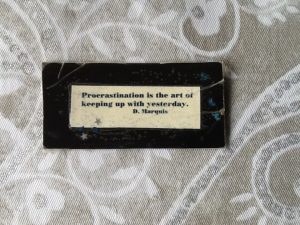How many of us would consciously leave our front door unlocked when we leave home? Or not lock your car and leave valuables in plain sight? Of course none of us would deliberately do that. There is a fancy phrase to cover how careful we are with our actions to avoid loss. It is called risk mitigation.
When investors think of risk the first thing that comes to mind is the stock market’s volatility. However, there are other risks that exist but don’t make the headlines. That is until a major catastrophic event occurs, which is costly in terms of lives lost, damage to the planet, and monetary loss.
Remember the Deepwater Horizon explosion and oil spill in the Gulf of Mexico? And the fatal fire in a Bangladeshi clothing factory?
More and more institutional and individual investors are wanting to invest where their money will make a positive difference anywhere on the planet. In the past these motives were termed socially responsible investing or ethical investing. But somehow, especially in Western Canada that term has become a moldy pigeonhole. Mention socially responsible Investing to people and they immediately equate it with the green movement or as being anti fossil fuel, before their eyes glaze over and they say “Oh no not another tree hugger!”
The correct more accurate term would be sustainable or responsible investing. And sustainable investing has a very broad universe of companies to consider. It would only exclude tobacco and arms manufacturing.
Sustainable investing acknowledges that the world has a finite amount of non-renewable resources and that the world’s population continues to grow. By 2030 which is less than a generation away, 50% more food and energy and 30% more fresh water will be needed.(1)
Investment companies that participate in sustainable investing know that resource optimization will be a key factor in handling this increased need. Resource optimization has many facets and encompasses many industries. Maybe you wouldn’t think that food packaging and agriculture are part of responsible investing. What about potable water management or pollution control?
Responsible investment companies focus on governance and initiating dialogue with companies to influence their corporate policies. Here are 2 Canadian examples of a sustainable investment company’s shareholder engagement in action:
Working with CN Rail to improve their safety record after rail disasters in 2005. CN now includes safety measures in metrics for executive compensation and has a chief safety officer. Their environmental, social and governance(ESG) measures also influence executive pay.
Shareholder engagement with Goldcorp led to the company voluntarily increasing royalties at their mine in Guatemala and committing to respecting traditions of the indigenous people through their human rights policy.
In 2013 a major sustainable investment company had 47 dialogues with companies of which 33 had positive outcomes.(2)
Sustainable investing is risk mitigation in action. Just as you lock your front door or put your valuables In the trunk of your care, companies take similar risk mitigation actions. Corporations are now realizing that good environmental and social governance positively affects their profit. Social media has helped the individual investor have greater influence though both their purchases at the retail level and through investing. Responsible or sustainable investing does not sacrifice rates of return, in fact it can add to returns.
The majority of citizens don’t want their purchases or consumption to be to the detrimentof others or the planet. Also our children will inherit the planet one day, we would want them to know we did our best to be good stewards of the earth they will inherit.
(1) www.populationinstitute.org/external/files/reports/The_Perfect_Storm_Scenario_for_2030.pdf
(2) ENG_NEI Ethical Funds SRI Brochure.pdf








